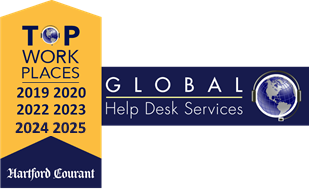A lot of very smart people have spent a whole lot of time trying to understand what’s happening in the labor force lately. As “The Great Resignation” revealed itself to be more of a “Great Reshuffling,” many organizations have struggled with maintaining business continuity as their workforce turns over.
That’s certainly true at the help desk. After all, your agents are the ones people turn to when they’re having technology trouble. If your agents are leaving, what does that mean for user support?
Well, that kind of depends on you. If you’ve done a poor job of planning, agent turnover could cause some big problems. But if you’ve taken the right steps ahead of time and put the proper preparations in place, you can maintain business continuity no matter what the labor market is doing.
Here’s how you do it.
Assume Some of Your Help Desk Agents Will Leave
It’s not pessimism to point out that long, long before “The Great Resignation” there was turnover among help desk agents. For some, working at the help desk is the first step in a long career in IT. Others may leave for their own reasons, either to pursue other jobs or as life circumstances change.
In other words, there’s really no excuse for being caught unprepared. If you create a plan on the assumption that some of your agents will leave, you’ll be clear-eyed about the need to have strong processes and documentation in place.
You’ll also be aware that you will, at some point, be understaffed. Your agents won’t always leave one at a time or wait until you’ve hired the last person’s replacement. Again, that’s totally normal, and your plans need to take this into account.
Strong Processes and Documentation Protect Business Continuity
When a help desk agent leaves, they take their experiences with them. But they shouldn’t take their expertise. If your help desk relies on a “go-to” agent to solve every problem or help other agents, you potentially have a big problem. Unless that knowledge is documented, it will disappear as soon as that agent leaves.
The best way to protect your help desk is to establish clear, consistent processes of documentation. The goal is to create a knowledge base that every agent has access to. As this knowledge base grows, it can feed into scripts, training plans, onboarding plans, and so on that ensures your agents can find the specific help they need.
As a matter of course, your agents should regularly check the knowledge base and make updates when they find gaps. That way, when somebody leaves, their expertise stays with the help desk.
Good Documentation Helps the Newbies Onboard Much Faster
There’s another very good reason to maintain strong processes and documentation, and that’s for the sake of new agents. As you’re staffing your help desk, the fastest way to onboard a newbie is to give them access to the knowledge they need. An unreliable knowledge base makes it hard for new hires to resolve tickets or do their jobs.
Your documentation should include training plans as well, developed with the feedback of your other agents. What did they find most helpful? What worked well — and what didn’t? Use their experiences to continuously improve your onboarding process for new hires. You (and your newbies) will be very glad that you did.
Don’t Let the Help Desk Agent Talent Pool Dry Up
Once in a while, you get lucky: Your help desk is both staffed and stable. Nobody’s looking to leave, and you can finally breathe a sigh of relief.
Congratulations! It’s a moment to savor. But just because you’re fully staffed doesn’t mean you should stop talking to candidates. Instead, if you want to be sure you’re able to maintain business continuity, you should routinely interview potential new hires.
You want to make sure you’ve got a pool of good people you can bring quickly onboard. When you do need to hire a backfill, you’ll already have some strong candidates to hire. And because your candidate pool is constantly changing, you need to make a habit of topping it up with new talent whenever you can.
Outsource Your Help Desk Services for a Seamless User Experience
If business continuity is still a concern, and your help desk is struggling to maintain levels of service, it may be time to bring in some help. Working with an outsourced help desk provider is one of the most cost-effective ways to deliver great support to your users, no matter what your turnover looks like.
An experienced provider will conduct an extensive discovery process to build up their own knowledge base of your systems and processes. They’ll also rely on their own expertise to ensure that your users receive the help that they need, and that every step is carefully documented.
From your users’ perspective, nothing will change — they’ll still receive great support when they need it. But an outsourced provider can add a degree of stability to your help desk you may otherwise be struggling to secure.


